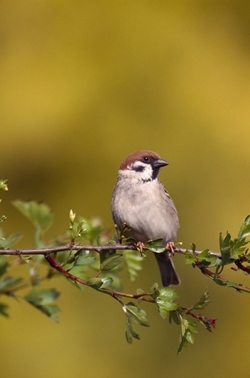 Modern farming leaves little residue seed for birds. So, growing a few areas of crop especially for birds will increase their chances of survival. Probably more than any other option this one is likely to produce the best pay-back in terms of wildlife in the shortest possible time.
Modern farming leaves little residue seed for birds. So, growing a few areas of crop especially for birds will increase their chances of survival. Probably more than any other option this one is likely to produce the best pay-back in terms of wildlife in the shortest possible time.
As a rule, do not just adopt one seed mixture and replicate it across the farm. Use different seed mixes for different purposes. There are two main requirements:
- Summer brood-rearing cover: This should be good foraging habitat for game chicks and should have as well some seed plants for finches and sparrows. These crops are best grown as strips alongside nesting cover which may be in the form of buffer strip, hedgerow or beetle bank. The plants must not create a thick impenetrable sward but provide an open network of stems through which broods of game can forage out of sight and under cover. Millet, linseed and triticale make an ideal mix.
- Winter food and shelter: The mixture for these areas should, if possible, be based on kale. It should be mixed with heavy seeding crops such as quinoa. The kale provides an umbrella of cover in winter under which the ground is kept moist and warm, allowing thrushes and insectivorous birds to feed in safety. The quinoa provides a staple for buntings and finches. These winter crops are best grown in blocks. This decreases the extent to which the crop can be damaged by deer and rabbits.